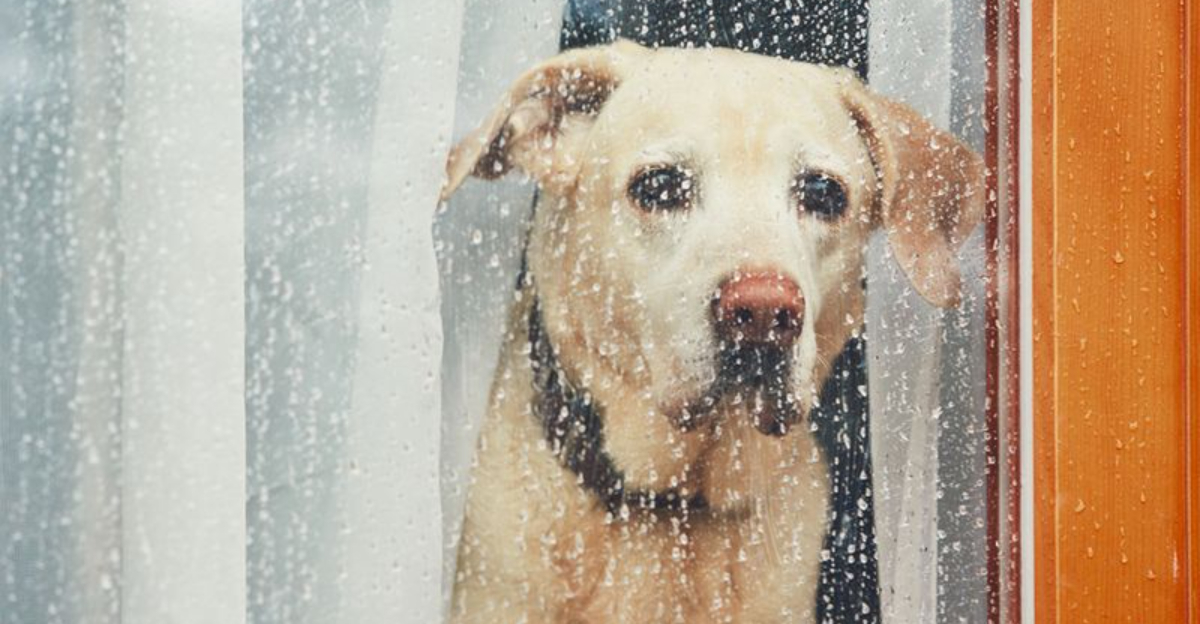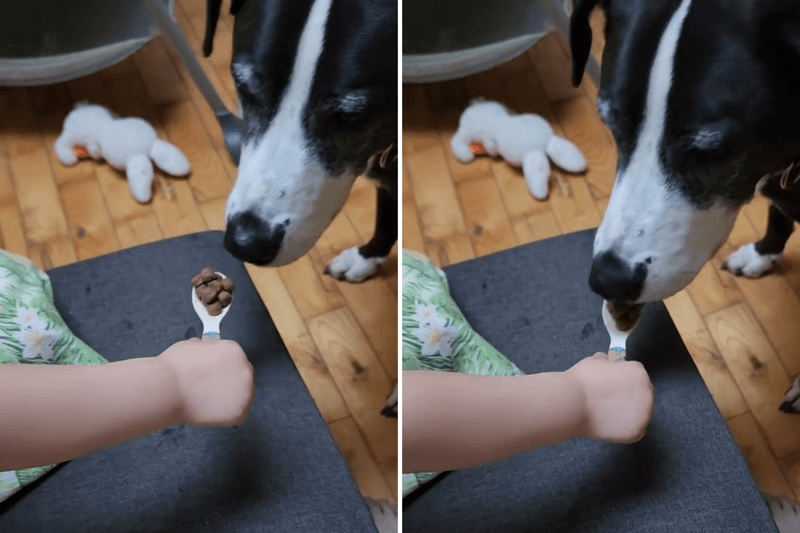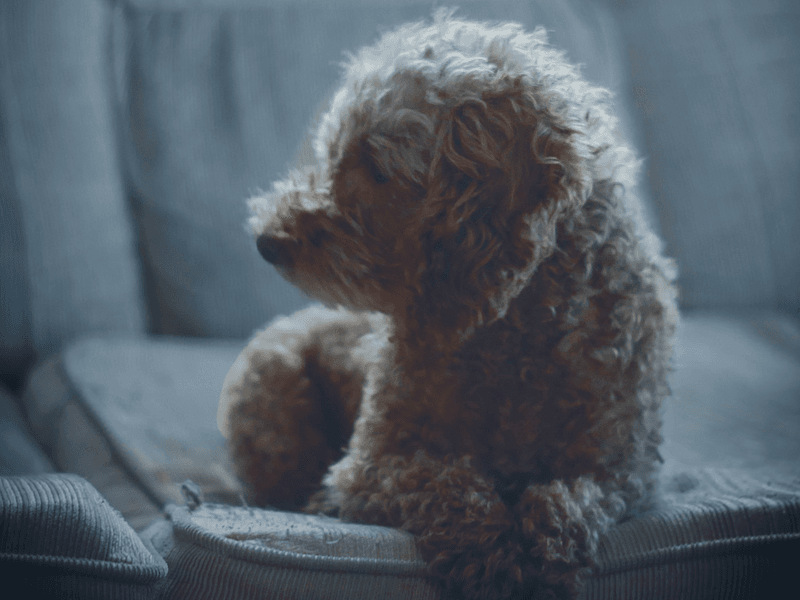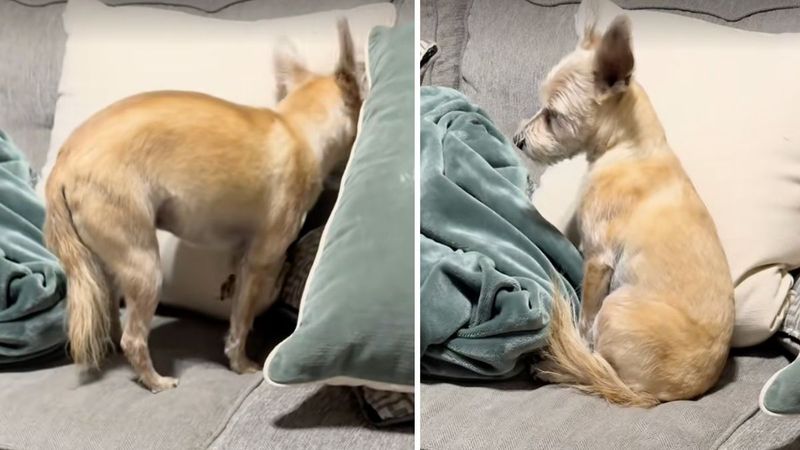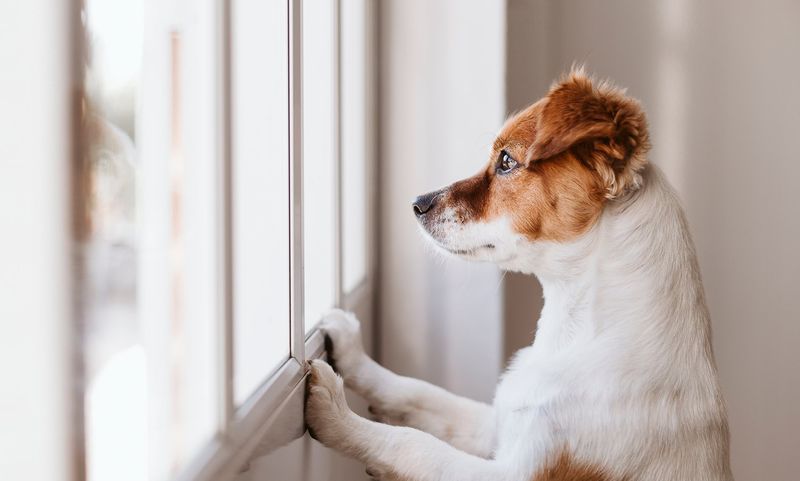Dogs are known for their loyalty and deep emotional bonds with their owners. When a beloved owner passes away, the loss can be profound for a dog. This blog post explores 14 heartbreaking ways dogs express their grief, showcasing the depth of their love and attachment.
Refusing Food
When a dog loses its owner, it might refuse to eat. This lack of appetite often reflects deep emotional turmoil. A once-vibrant Labrador may sit beside its food bowl, ignoring the meal altogether, a silent protest to the absence of its beloved human.
The scene is both touching and concerning, as nourishment is vital for health. Some dogs may slowly return to eating, while others might need encouragement or even hand-feeding.
The bond shared was so strong that even a basic survival instinct, like hunger, becomes secondary to their overwhelming sense of loss.
Restless Wandering
Restlessness can be a sign of a dog’s grief. A Beagle might wander the house, searching for its lost friend, unable to understand why the familiar presence has vanished. This incessant wandering is their way of searching for what they’ve lost.
The home, filled with memories, only heightens their confusion and longing. Each corner, once a spot of shared joy, now resonates with absence.
This behavior is both heart-rending and poignant, a testament to their undying loyalty. Owners may find comfort in knowing that this behavior is a natural expression of the dog’s deep love.
Sleeping in Their Spot
Dogs often seek comfort in familiar places. A Golden Retriever might find solace in sleeping in the spot where its owner used to sit. This behavior is an attempt to feel close to the one they’ve lost.
The warmth of the chair and the lingering scent provide a semblance of the connection once shared. These spots become sacred ground, a refuge in their bewildered state.
While it might be distressing to witness, allowing dogs this comfort can aid their healing. It’s a gentle reminder of the bond that remains, even in absence.
Increased Vocalization
Grief can manifest through sounds. A Siberian Husky may begin to howl more frequently, vocalizing its inner turmoil. This increased vocalization is a way to communicate its heartache and longing.
To the outside world, it may sound like a lament, echoing through the backyard. Each howl carries an emotional weight, a call into the void left by their cherished human.
While haunting, these sounds are a natural outlet for their feelings. Understanding and gentle reassurance from family members can help the dog cope with its loss over time.
Clinging to Belongings
A grieving dog may cling to its owner’s belongings, like an old sweater. A Terrier might wrap itself around the item, finding comfort in the lingering scent. These objects become their emotional anchor, a tangible connection to the past.
In their confusion, the familiar smell offers solace, a whisper of presence that calms their heart. It’s a poignant reminder of the depth of their bond.
While it may seem painful, this behavior is a healthy coping mechanism. Allowing the dog access to these cherished items can aid in their emotional recovery.
Withdrawal from Interaction
Losing an owner may lead a dog to withdraw from interaction. A Bulldog might sit quietly in a corner, avoiding play with others. This withdrawal reflects their mourning period, a time to process the absence.
The vibrant energy of play becomes overwhelming, a stark contrast to their inner world. In solitude, they find space to grieve, to ponder the void left behind.
While difficult to observe, respecting their need for space can be beneficial. In time, with love and patience, they may re-engage with the world around them.
Frequent Whining
Whining can be a dog’s way of expressing sadness. A Dachshund might sit by the window, softly whining as it stares out, waiting for the return of its beloved owner.
This behavior showcases their longing and confusion, as they try to make sense of the change. The street outside becomes a symbol of hope, a place where familiar footsteps once approached.
Though heart-wrenching, this expression of grief is a testament to their deep emotional connection. Offering comfort and understanding can help them navigate this challenging time.
Loss of Playfulness
Grieving dogs often lose interest in play. A Border Collie, known for its energy, might lie listlessly, ignoring its toys. This loss of playfulness is a clear sign of their heartache.
The garden, once a playground of joy, now stands silent, echoing their sorrow. The absence of their owner transforms vibrant activities into hollow routines.
While concerning, this is a normal phase of grieving. Providing gentle encouragement and new activities can eventually spark their interest again, helping them rediscover joy.
Increased Sleeping
Sleep can become a refuge for a grieving dog. A Pug might sleep more than usual, finding solace in its dreams. Increased sleeping is a way to escape the reality of their loss.
The porch, bathed in sunlight, becomes a peaceful sanctuary. In sleep, memories of shared moments might play out, offering a temporary comfort.
Understanding this behavior as part of their mourning process is key. Allowing them the space to rest can support their emotional healing journey.
Lethargy
Lethargy can be a profound sign of a dog’s grief. A Dalmatian, typically lively, might lie sluggishly, showing little interest in its surroundings. This change in energy reflects a heavy heart.
The living room, once buzzing with activity, now echoes a quiet stillness. Their world feels incomplete, and responding to calls seems too burdensome.
While it might be worrying, understanding this lethargy as a phase of mourning can be reassuring. With time and compassion, their zest for life can gradually return.
Seeking Solitude
Some dogs seek solitude when grieving. A German Shepherd might retreat to a quiet corner of the park, sitting alone under a tree. This solitude is their way of processing the loss in peace.
The park, filled with memories of happier times, provides a backdrop for reflection. In isolation, they find a space to connect with their emotions.
Though it may be hard to watch, giving them this space can be healing. In solitude, they can come to terms with their feelings, gradually finding their way back to balance.
Increased Aggression
Grief may manifest as aggression in some dogs. A Rottweiler might become more protective, snarling at strangers. This increased aggression is a defense mechanism, a response to its vulnerable state.
Standing guard, they feel a heightened need to protect what remains of their world. The loss of their owner intensifies their instinct to shield loved ones.
While concerning, this behavior often mellows with reassurance and understanding. Professional guidance can also help manage these changes, ensuring the dog’s emotional well-being.
Incessant Searching
Some dogs tirelessly search for their lost owner. A Cocker Spaniel might sniff around the garden, looking for any sign of their companion. This searching reflects an unwillingness to accept the finality of their absence.
The garden, once a shared sanctuary, becomes a place of earnest exploration. Each scent is a potential lead, a hope that the bond isn’t truly severed.
Though difficult to witness, acknowledging this behavior as part of their grieving process is important. Gradually, with support, they learn to cope with their loss.
Panting Excessively
Excessive panting can signal a dog’s anxiety and distress. A Boxer might pant heavily, eyes wide with confusion, as it grapples with its owner’s loss.
The living room, once a place of comfort, now feels foreign and unsettling. This physiological response is their way of managing the emotional upheaval.
Understanding this panting as a sign of grief helps provide the necessary support. Comforting gestures and calming routines can ease their anxiety, helping them feel more secure over time.
